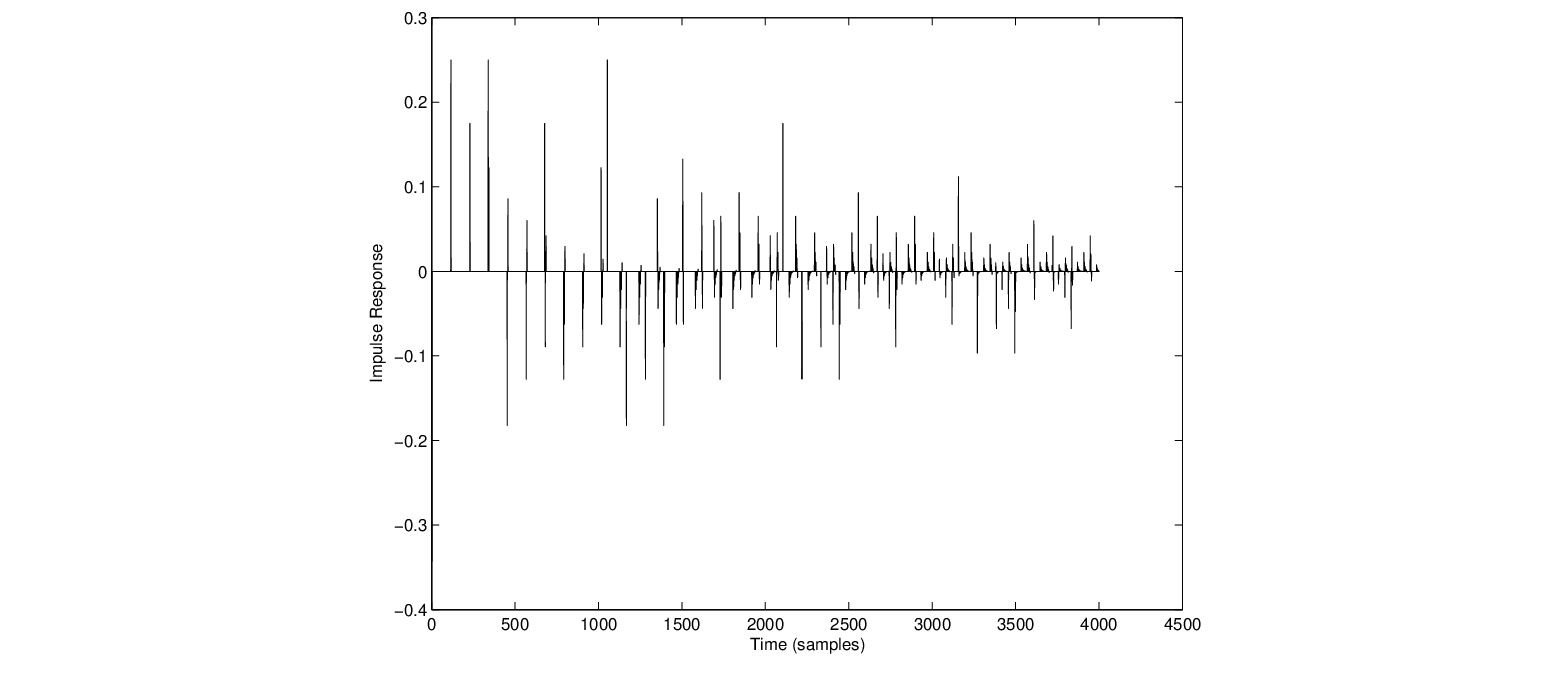Next: Feedback Delay Networks (FDN) Up: Artificial Reverberation Previous: Early Reflections
 . The delay-line lengths
. The delay-line lengths  should be mutually prime and span successive orders of magnitude.
should be mutually prime and span successive orders of magnitude.
 |

| ©2004-2024 McGill University. All Rights Reserved. Maintained by Gary P. Scavone. |